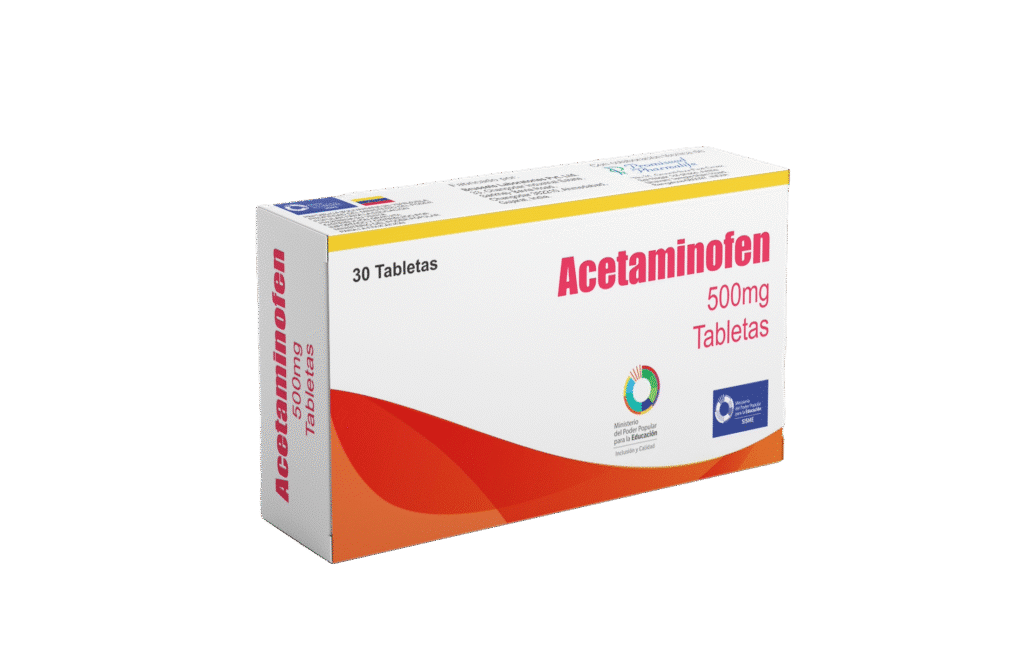







How Acetaminophen 500 mg Tablet Works (Pharmacodynamics)
Important Precautions While Taking Acetaminophen 500 mg Tablet
Avoid Taking Multiple Products
Risk of Metabolic Acidosis (HAGMA)
Liver & Kidney Health
When to See a Doctor
Glutathione Deficiency
Pregnancy & Breastfeeding
Pregnancy
Breastfeeding
Dosage Instructions of Acetaminophen 500 mg Tablet
Adults, Elderly & Children (16+ years)
Children (10–15 years)
Not Suitable For
Directions for Use
Side Effects of Acetaminophen 500 mg Tablet
Frequency Classification
Blood & Lymphatic Disorders
Immune System Disorders
Metabolism & Nutrition Disorders
Respiratory Disorders
Hepatobiliary Disorders
Selected Adverse Reactions Explained
Pyroglutamic Acidosis (HAGMA)
Bronchospasm
Store in a cool, dry place at a temperature below 30°C and away from light.
Keep out of reach of children.
3×10 Alu/PVC Blister
Acetaminophen 500 mg Tablets is available in an Alu/PVC blister of 10 tablets. Such 03 blisters in a unit carton with a package insert.
Contact us directly to receive full information on the product, the formulation, the science behind it, stability data, and more. Our Business Development Manager is a click away.
Questions are useful tools, they open lines of communication; give us information; improve interactions, facilitate analysis, and many more.
A pharma CMO is a special kind of an organization, offering contract manufacturing services to pharmaceutical companies for various kinds of drug formulations.
Reduce overall costs and time to market :
Contract manufacturers already have the needed infrastructure and technical staff, so working with a CMO or CDMO can decrease the cost of manufacturing your pharmaceutical products.
Scalability and flexible production capacity :
You can produce what you need when you need it without worrying about excess capacity. Additionally, CMOs understand the importance of quality and compliance, so you don't have to sacrifice safety for scalability.
Save on upgrading and maintaining equipment :
If you have your manufacturing facility, you’ll have to pay to upgrade your equipment as technology advances—which can get expensive. A CMO/CDMO’s only function is to make and distribute products, so part of their core business responsibility is to update their equipment whenever needed and perform maintenance.
Ease supply chain issues :
During the pandemic, there were several instances of supply chain issues, including medicine shortages. CMOs are generally better equipped than startups to handle a supply chain crisis.
Bandwidth to focus on core competencies
When your company resources aren’t directly allocated to manufacturing and distribution, you have more time to focus on other tasks, like marketing your new drug, researching, or working on drug discovery.
We have 7+ manufacturing sites with a minimum of WHO GMP certification and other country-specific approvals like NAFDAC approved, PPK Kenya Approved, TFDA Tanzania Approved, EU-GMP Approved.
We have below manufacturing capacity:
For Tablet, Capsule, and soft gel: up to 1 million units per shift
For Syrup: up to 0.05 Million per shift
For Ampoule and Vial: up to 0.1 million units per shift
For Ointment and Cream: up to 0.1 million units per shift
For Suppository: 0.1 Million units per shift
